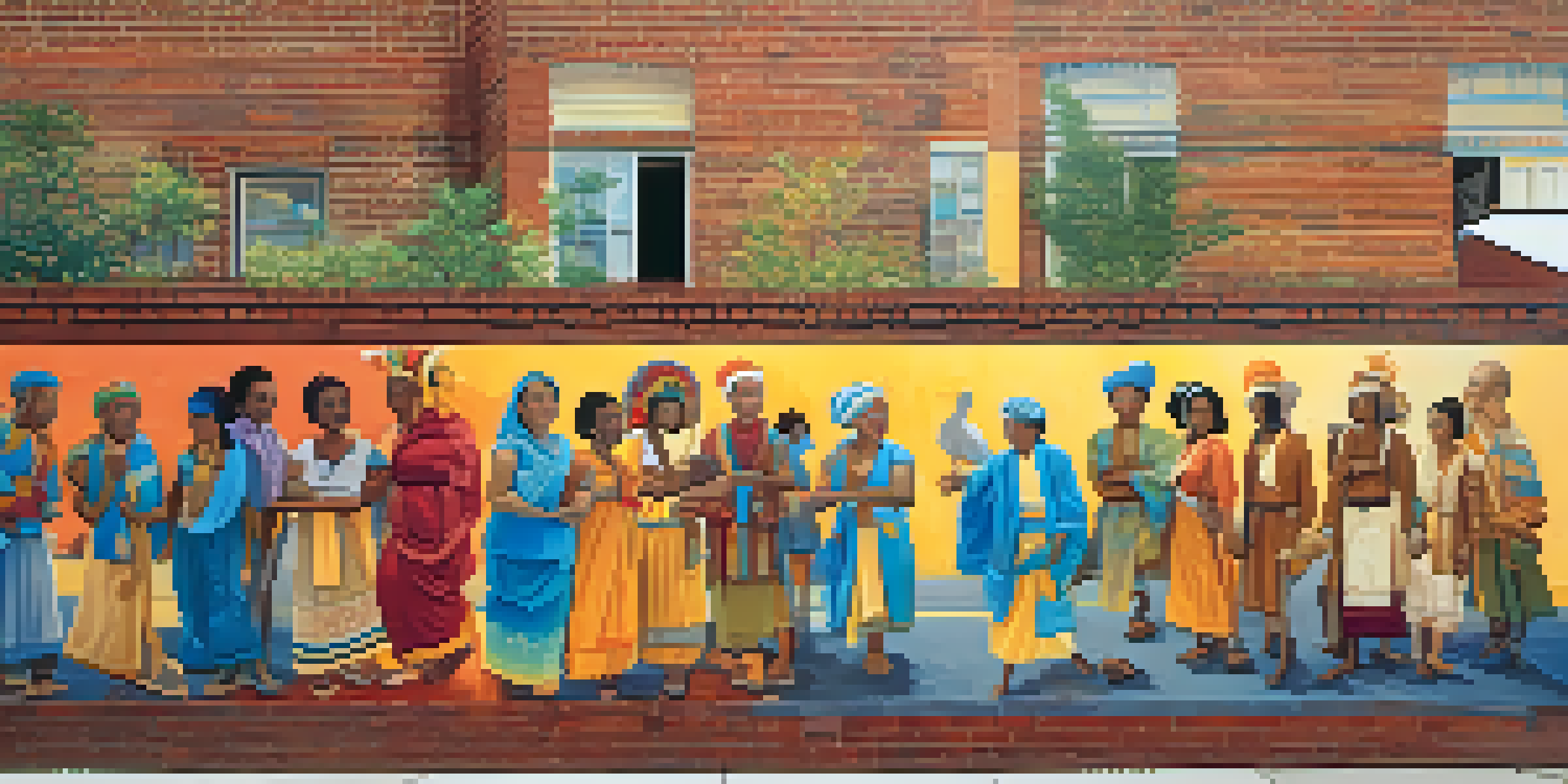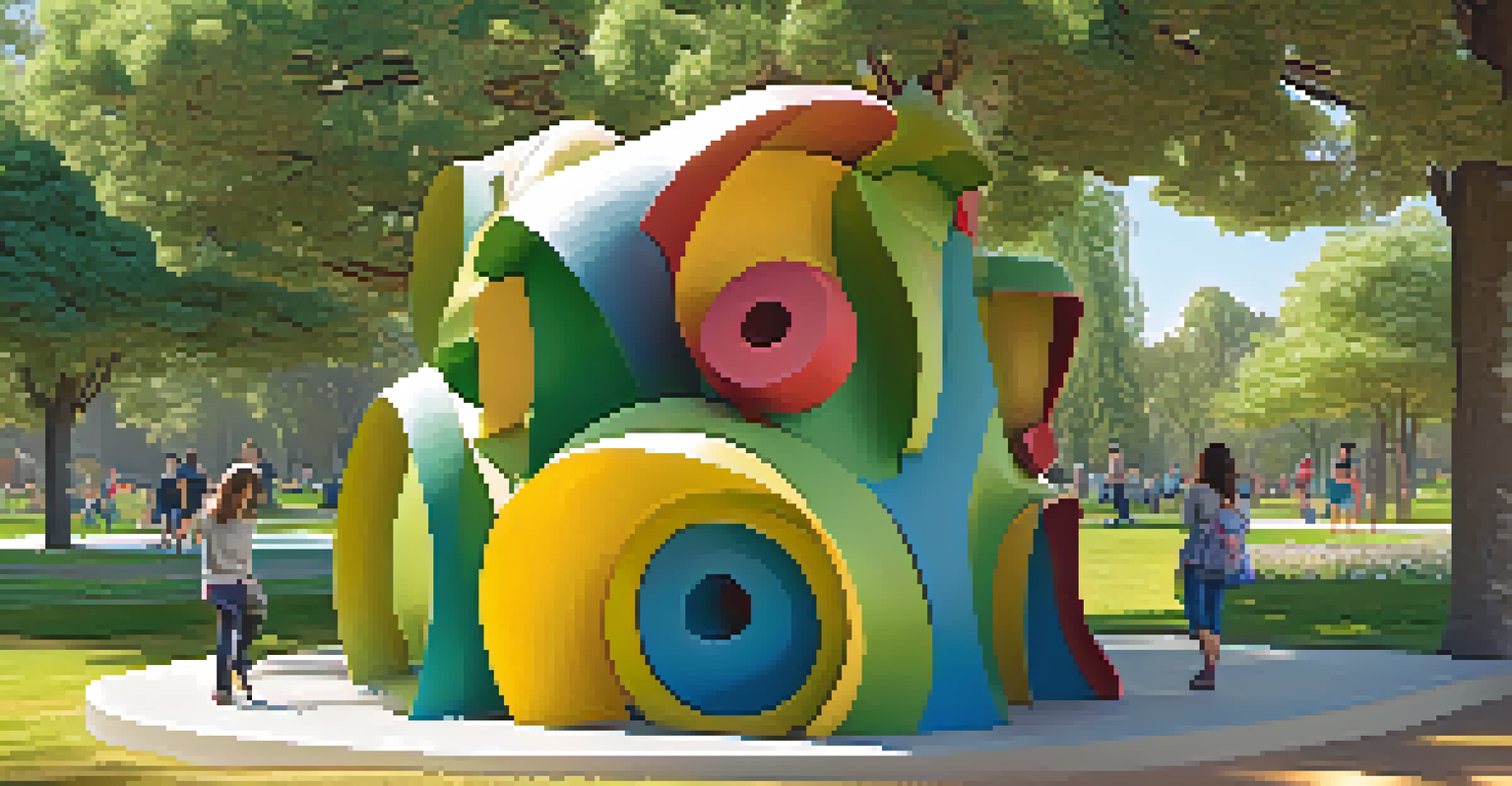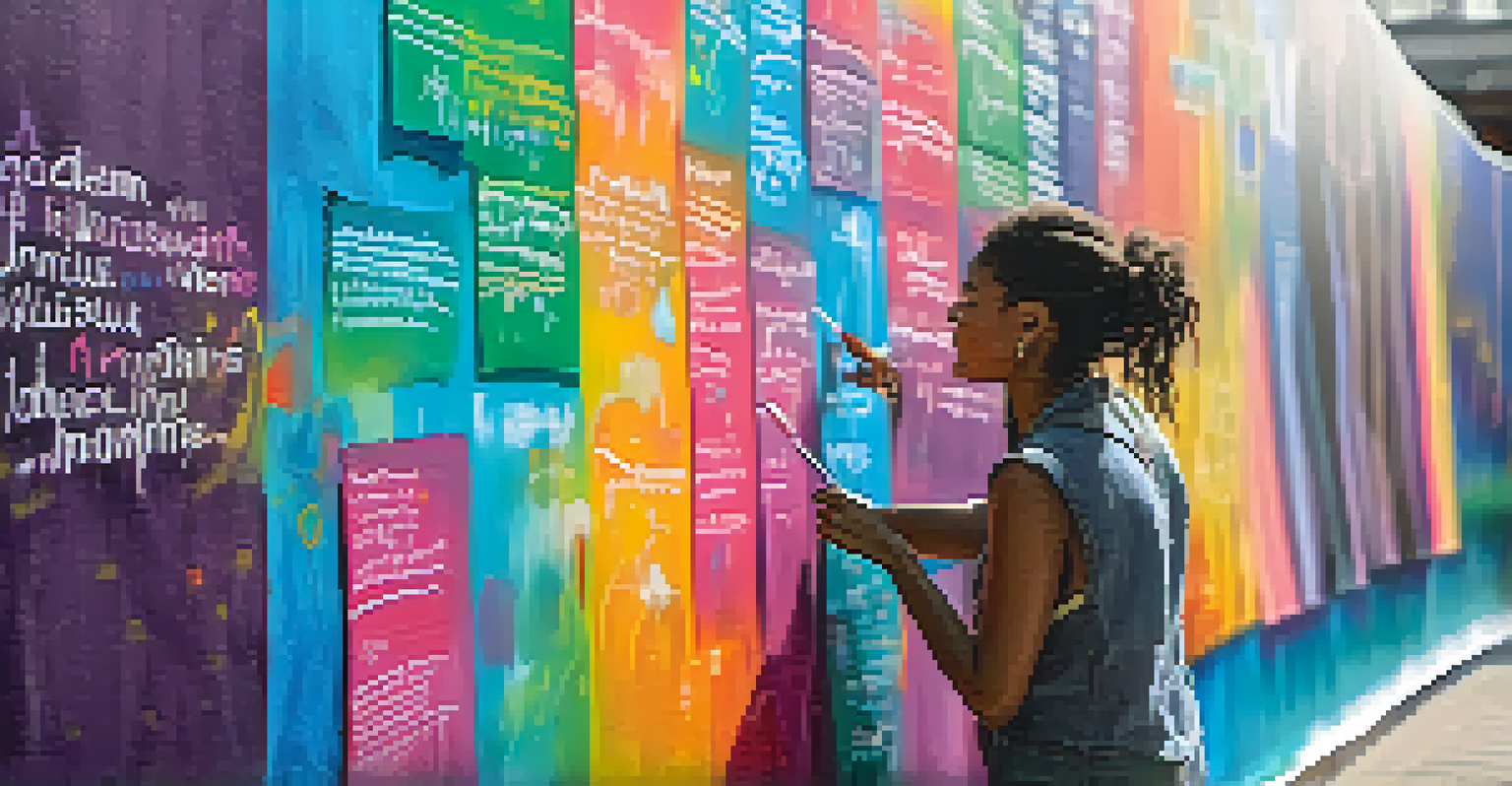Public Art as a Tool for Social Change and Community Dialogue

Understanding Public Art and Its Impact
Public art encompasses a variety of artistic expressions displayed in public spaces, ranging from murals to sculptures. Its primary goal is not just aesthetic enhancement but to engage communities and provoke thought. By placing art in everyday environments, it invites people to interact with it, often sparking conversations about local issues.
Art is not a mirror to reflect reality, but a hammer with which to shape it.
Imagine walking through your neighborhood and encountering a vibrant mural that portrays the history of your community. Such visual storytelling can resonate deeply, evoking emotions and memories. Public art acts as a mirror, reflecting societal values and challenges, while also celebrating cultural heritage.
Moreover, public art can serve as a platform for underrepresented voices. It allows artists to share their perspectives on social injustices, environmental concerns, or political issues. In this way, art becomes a conduit for dialogue, encouraging community members to engage in discussions that might otherwise go unheard.
Art as a Voice for Marginalized Communities
Many public art projects focus on empowering marginalized groups, giving them a voice in the public discourse. For instance, community murals often depict struggles and triumphs that resonate with local residents, fostering a sense of pride and belonging. These artistic expressions can challenge stereotypes and promote understanding across diverse populations.

Consider the impact of a mural that portrays the history of immigrant families in a neighborhood. Such artworks can educate the public about the contributions these communities have made, while also addressing the challenges they face. This not only fosters empathy but also encourages unity among residents.
Public Art Engages Communities
Public art serves as a catalyst for community engagement, provoking thought and sparking conversations on local issues.
By spotlighting these narratives, public art cultivates an environment where dialogue can flourish. It invites viewers to reflect on their biases and encourages conversations that promote social equity, ultimately leading to more inclusive communities.
Public Art Projects That Inspired Change
Throughout history, numerous public art projects have sparked significant social change. For example, the 'Fearless Girl' statue in New York City challenged traditional gender roles and inspired discussions about women in leadership. This small bronze figure became a symbol of female empowerment, motivating people to rethink their perceptions.
Public art is a way to bring people together and inspire change, creating a dialogue that can help communities grow.
Similarly, the 'Before I Die' wall project allows communities to share their aspirations publicly. It invites individuals to write down their dreams, fostering a collective vision for the future. This simple act of sharing can lead to deeper conversations about personal and communal goals.
These examples illustrate how public art transcends mere decoration. It can serve as a powerful catalyst for societal reflection and transformation, encouraging audiences to engage in meaningful dialogues about the issues that matter most.
Creating Safe Spaces for Dialogue
Public art can transform spaces into safe havens for dialogue and reflection. By integrating art into community hubs, cities can create environments where residents feel comfortable discussing their concerns and hopes. These spaces can become gathering points for social movements, fostering community cohesion.
Think about a local park adorned with interactive sculptures or murals that represent community values. Such spaces not only beautify the area but also invite residents to come together, share stories, and engage in discussions. The art becomes a conversation starter, bridging gaps between diverse groups.
Empowerment Through Artistic Expression
By highlighting the stories of marginalized communities, public art fosters understanding and promotes social equity.
Moreover, these safe spaces encourage participation from all community members, including children and seniors. When everyone feels represented and heard, it strengthens community ties and fosters a sense of belonging, which is vital for social change.
The Role of Artists in Community Engagement
Artists play a crucial role in leveraging public art as a tool for social change. They often collaborate with community members to ensure their artwork resonates with local concerns and aspirations. This collaborative approach fosters a sense of ownership among residents, making the art more impactful.
Consider artists who organize workshops to involve the community in the creative process. These workshops not only empower individuals to express themselves but also help build relationships among diverse groups. This engagement can lead to deeper understanding and collaboration on community issues.
Through this partnership, public art becomes a shared endeavor, reflecting the community's identity and collective dreams. The artist's role transcends that of a creator; they become a facilitator of dialogue and a catalyst for change.
Challenges Facing Public Art Initiatives
Despite its potential, public art initiatives often face challenges, including funding and bureaucratic hurdles. Securing financial support can be particularly difficult, especially for grassroots projects aimed at addressing social issues. This can limit the scope and scale of transformative art initiatives.
Additionally, navigating local regulations and obtaining permits can feel daunting for artists and organizations. These obstacles may discourage creative expressions that tackle controversial topics or challenge the status quo. Overcoming these barriers requires advocacy and community support to ensure that public art can flourish.
Artists as Community Catalysts
Artists collaborate with community members to create impactful public art, fostering dialogue and reflecting collective aspirations.
Despite these challenges, many communities have found innovative ways to fund and implement public art projects. By rallying local support and forming partnerships with businesses and institutions, they can create impactful works that drive social change.
The Future of Public Art in Social Movements
As we look to the future, public art will likely continue to play a pivotal role in social movements. With the rise of digital art forms and social media, artists have new tools at their disposal to reach wider audiences. This evolution can amplify messages and foster global dialogues around pressing social issues.
For instance, virtual reality and augmented reality projects can create immersive experiences that challenge perceptions and inspire action. These innovative approaches can engage younger generations in ways that traditional art forms might not, ensuring that the legacy of public art endures.

Ultimately, the intersection of technology and public art can enhance community engagement, making it easier for people to come together around shared causes. As communities evolve, so too will the art that reflects their struggles and aspirations, continuing the vital conversation around social change.